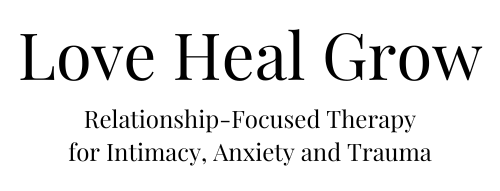
Have you ever felt like you had the winter blues? Family and work obligations can wear on us heavily in the winter. With earlier sunsets and colder weather, we might feel more drained in the evenings and less energetic during the day. Winter can be a tough time. For some, though, this “blue” period can be quite severe. During colder and darker months, many of us find ourselves unable to shake off feelings of sadness, lethargy, numbness or emptiness. This can become a brutal cycle that repeats year after year, causing certain months to become very difficult periods.
Seasonal Affective Disorder is a special type of depression that can affect us when the seasons change. If this sounds all too familiar to you, you might be wondering what you can do—and you’re not alone. Millions of people in the United States alone suffer from SAD. Fortunately, there are some steps we can take to help overcome Seasonal Affective Disorder. We’ll discuss what Seasonal Affective Disorder is, some of the signs you might be experiencing SAD, and some tips for coping, including possible treatment options.
What Is SAD?
Seasonal Affective Disorder, or SAD, is a type of depression. SAD might just feel like depression, but symptoms will likely correspond more with the seasons. While Seasonal Affective Disorder usually strikes during fall and winter, some people may experience symptoms during spring and summer months instead.
There are two primary types of SAD: summer-pattern, and winter-pattern. As their names imply, summer pattern SAD tends to manifest symptoms during warmer months, while winter-pattern SAD is likely to manifest symptoms during colder months. In both cases, SAD strikes when the seasons change, and it can be tough to navigate.
What Are Signs Or Symptoms Of SAD?
Signs of Seasonal Affective Disorder are similar to some usual signs of depression, but you might notice them happening during certain seasons. While only a mental healthcare professional can diagnose you or a loved one with Seasonal Affective Disorder, there are some signs to look out for. Some of those signs might include:
- Irritability
- Lack of motivation
- Anxiety
- Low self esteem
- Dysphoria (feeling really, really unhappy)
- Excessive sleeping or sleepiness (more likely with winter-pattern)
- Food cravings—particularly carbohydrates (more likely with winter-pattern)
- Loss of appetite (more likely with summer-pattern)
- Difficulty sleeping (more likely with summer-pattern)
Remember, Seasonal Affective Disorder is distinguished by its return during certain seasons. So, if you notice a pattern of these symptoms and others that seem to repeat each year during certain seasons, it may be time to reach out for help.
Tips For Coping With SAD
When Seasonal Affective disorder hits, we can feel hopeless, burned out, and even maybe helpless—but there are some steps we can take to make these times a little bit easier, and maybe even overcome the effects of SAD.
Increasing Exposure To Sunlight
You might find that increasing the amount of sunlight you get helps your symptoms. There are several ways you can increase the amount of sunlight you take in, including spending more time outdoors during daylight hours, rearranging your home to allow more sunlight in, and deliberately spending more time near windows. As sunlight can cause skin and retina damage, be sure to consult with your doctor first and be aware of the risks.
Light Therapy
Another method that might help you reduce symptoms of SAD at home is light therapy. Light therapy involves a very bright light that you can set up in your home and sit near for between 20 and 40 minutes a day. This method involves less risk from sun damage, but does carry its own risks, like eye strain, headaches, and jitteriness. Be sure to consult your doctor before starting, look for a light that doesn’t emit harmful UV light, and avoid looking directly into the light.
Antidepressants
Your mental healthcare provider may discuss administering antidepressant medications like SSRIs to help treat Seasonal Affective Disorder. Some people find that using antidepressants helps their symptoms dramatically.
Therapy at Love Heal Grow
Therapy is another way to address not only your symptoms from Seasonal Affective Disorder but other areas of your mental health as well. Therapy carries less risk than some other forms of treatment but it can yield some of the best results. There is strong evidence to suggest that therapy is a highly effective approach to SAD. Another benefit of seeing a therapist is having a mental healthcare professional on your side who can help you navigate other possible treatment options in conjunction with therapy. Working with a therapist, you’ll have someone on your team who wants the best for you, navigating each season.
The Bottom Line
Winter can be a tough time of year. It’s normal to feel stressed during the Holiday season and even afterward. Between work obligations, meeting with family members, and trying our best to honor our spiritual beliefs and traditions, we might end up feeling more stressed or tired than normal.
But, if you feel like winter has become a dreaded time of the year when you feel depressed, lethargic, and burned out, and it repeats year after year, it may be time to reach out for help—and we are here to help. Seasonal Affective Disorder can be devastating, but you don’t have to navigate it alone. Schedule an appointment with Love Heal Grow, and we can help you get through this.





